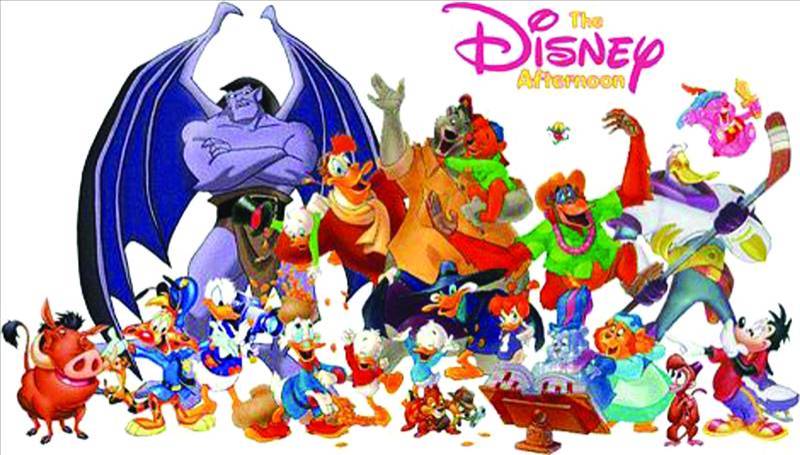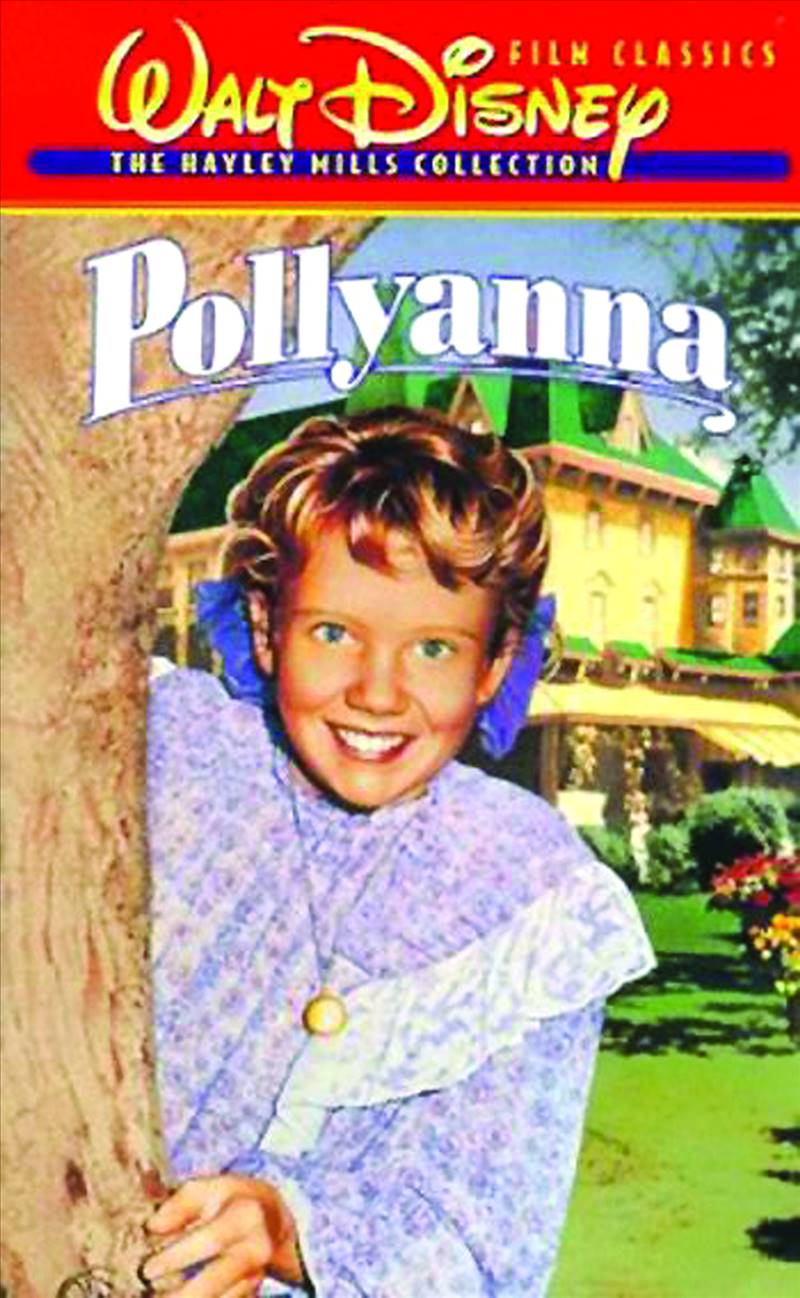
I live in fear of triggering daily morning emails from newspapers subscriptions. They each promise the same thing: to condense the horrorscape of the news into bit-sized cyanide pills, no doubt so that one cries quicker while perusing them on the loo. The deluge of bad news - Covid, racists, abducted journalists, fascist leaders, Kanye West - is a stream of hate constant enough to, as my therapist puts it, “$*%# you sideways.” (She has, I’ve discovered to my joy, a colloquial turn of phrase). On top of everything several Amazon packages that I was expecting were delivered elsewhere, languishing as I navigate a customer service computer that hates me. Sick and tired of feeling like the unwilling victim of a deluge of bad news, last week I began a free trial of Disney Plus in an effort to bring more positivity into my life. What is more positive than the world that brought us Mickey and The Sound of Music?
The streaming service holds the key to every piece of content Disney has created since it began, and there is a lot. Most of the cartoons in the archive from the 1930s and ‘40s carry warnings before they begin to prepare you in case you didn’t know early Mickey Mouse was wildly racist, but the rest of it is an endearingly familiar collection of princesses and talking rabbits. As I scrolled through the nostalgia, I suddenly had a whim so powerful it felt like a revelation: find Pollyanna, that’ll make you feel good.

My siblings are both much older than me, so that a lot of my routine childhood movies were things popular years before my time. This is why I saw our well used Pollyanna (1960) VHS almost every week for most of the early 1990s. Set in a small American town at the turn of the 20th century, the movie follows the poor but friendly orphan named Pollyanna as she comes to live with her rich but distant Aunt Polly. The Aunt rules the entire town with the same detached authority that she exerts on her new niece.
But Pollyanna is unflappably optimistic and kind, and soon moves among the moody, disgruntled townsfolk, infecting them with her white blond brand of hope and optimism. Her main tool is “the glad game” i.e. a gem where you try to find the good in a situation which might not be great. (Indeed, the movie was so popular that the term “Pollyanna” is still synonymous in general conversation with someone being “blindly optimistic”). We see her convince a foul-tempered old man that he might actually like children; we are with her when she can’t understand why a woman would be more interested in feigning sickness than living life, and we sigh as she tries to get her Aunt Polly in a room alone with her former lover (that Pollyanna kew her Aunt Polly’s mood would improve by getting laid is a fact one only picks up after watching it as a grown up).
“If you look for the bad in people, you’ll usually find it” says Pollyanna at one point (to a pastor no less). The dialogue has enough violin accompaniment for us to know this is what the movie is about. Be grateful, be positive, be glad. So infectious is this young girl’s charm that the town decides to hold a bazaar to raise funds for a new roof for the orphanage despite poor unlaid Aunty Polly’s opposition. To hide from her aunt, Pollyanna sneaks out of her mansion, has a wonderful time at the fair where everybody loves her and then, while trying to sneak back into the house, falls from a four-storey height and is found spreadeagled on the concrete driveway, paralyzed.
Didn’t see that coming, did ya? It was around this point, near the end of the movie, that I began to remember with sinking clarity how very dark early Disney could get. Aunt Polly obviously blamed herself (as well she should) for both Pollyanna’s paralyzed leg as well as her understandably raging depression. The penultimate scene is the town barging into Aunt Polly’s mansion, determined to say goodbye to Pollyanna before she heads off to her surgery. They cry and thank her, showing all the ways she changed the place for the better. I am not embarrassed to say I tear up at Honda car commercials, so by this stage I believe that I was bawling into my Pringles, overcome with equal part nostalgia and nausea, weeping as Pollyanna hugged a dog goodbye. Once I composed myself (it wasn’t all Disney, the Amazon package thefts hurt), I waited for the movie to end on its inevitable high note that would keep my spirits bolstered.
It. Did. Not. The final scene is the town waving goodbye to Pollyanna, now on a train headed to Baltimore for an operation, accompanied by Aunt Polly and her new hunky boyfriend (probably accounts for Aunty Polly’s new glow). That’s it. The End. No hint as to whether the girl could walk again. Or if she died of a clot on the operating table. Or an infection. Or if she lost one leg or both. We don’t even know what happened to that damn orphanage roof.
“WHATS THE LESSON HERE, HUH WALT?” I screamed as I hurled my empty Pringles cans at the TV. “TELL ME!”
But Disney didn’t reply, except to suggest I watch Bambi or Lion King next.
“No bloody thank you,” I said grumpily. “Rather watch the news.”
Then something strange happened. The postman buzzed my place and told me he saw a package addressed to me lying in the lobby of the next building, and brought them over for me. And just like that.
I’m not sure if a world like Pollyanna is possible, but I do know that I was so glad when he handed me my box that I didnt even mind when he told me that it’s weird I was weeping over a toaster oven.
The streaming service holds the key to every piece of content Disney has created since it began, and there is a lot. Most of the cartoons in the archive from the 1930s and ‘40s carry warnings before they begin to prepare you in case you didn’t know early Mickey Mouse was wildly racist, but the rest of it is an endearingly familiar collection of princesses and talking rabbits. As I scrolled through the nostalgia, I suddenly had a whim so powerful it felt like a revelation: find Pollyanna, that’ll make you feel good.

My siblings are both much older than me, so that a lot of my routine childhood movies were things popular years before my time. This is why I saw our well used Pollyanna (1960) VHS almost every week for most of the early 1990s. Set in a small American town at the turn of the 20th century, the movie follows the poor but friendly orphan named Pollyanna as she comes to live with her rich but distant Aunt Polly. The Aunt rules the entire town with the same detached authority that she exerts on her new niece.
But Pollyanna is unflappably optimistic and kind, and soon moves among the moody, disgruntled townsfolk, infecting them with her white blond brand of hope and optimism. Her main tool is “the glad game” i.e. a gem where you try to find the good in a situation which might not be great. (Indeed, the movie was so popular that the term “Pollyanna” is still synonymous in general conversation with someone being “blindly optimistic”). We see her convince a foul-tempered old man that he might actually like children; we are with her when she can’t understand why a woman would be more interested in feigning sickness than living life, and we sigh as she tries to get her Aunt Polly in a room alone with her former lover (that Pollyanna kew her Aunt Polly’s mood would improve by getting laid is a fact one only picks up after watching it as a grown up).
“If you look for the bad in people, you’ll usually find it” says Pollyanna at one point (to a pastor no less). The dialogue has enough violin accompaniment for us to know this is what the movie is about. Be grateful, be positive, be glad. So infectious is this young girl’s charm that the town decides to hold a bazaar to raise funds for a new roof for the orphanage despite poor unlaid Aunty Polly’s opposition. To hide from her aunt, Pollyanna sneaks out of her mansion, has a wonderful time at the fair where everybody loves her and then, while trying to sneak back into the house, falls from a four-storey height and is found spreadeagled on the concrete driveway, paralyzed.
Didn’t see that coming, did ya? It was around this point, near the end of the movie, that I began to remember with sinking clarity how very dark early Disney could get. Aunt Polly obviously blamed herself (as well she should) for both Pollyanna’s paralyzed leg as well as her understandably raging depression. The penultimate scene is the town barging into Aunt Polly’s mansion, determined to say goodbye to Pollyanna before she heads off to her surgery. They cry and thank her, showing all the ways she changed the place for the better. I am not embarrassed to say I tear up at Honda car commercials, so by this stage I believe that I was bawling into my Pringles, overcome with equal part nostalgia and nausea, weeping as Pollyanna hugged a dog goodbye. Once I composed myself (it wasn’t all Disney, the Amazon package thefts hurt), I waited for the movie to end on its inevitable high note that would keep my spirits bolstered.
It. Did. Not. The final scene is the town waving goodbye to Pollyanna, now on a train headed to Baltimore for an operation, accompanied by Aunt Polly and her new hunky boyfriend (probably accounts for Aunty Polly’s new glow). That’s it. The End. No hint as to whether the girl could walk again. Or if she died of a clot on the operating table. Or an infection. Or if she lost one leg or both. We don’t even know what happened to that damn orphanage roof.
“WHATS THE LESSON HERE, HUH WALT?” I screamed as I hurled my empty Pringles cans at the TV. “TELL ME!”
But Disney didn’t reply, except to suggest I watch Bambi or Lion King next.
“No bloody thank you,” I said grumpily. “Rather watch the news.”
Then something strange happened. The postman buzzed my place and told me he saw a package addressed to me lying in the lobby of the next building, and brought them over for me. And just like that.
I’m not sure if a world like Pollyanna is possible, but I do know that I was so glad when he handed me my box that I didnt even mind when he told me that it’s weird I was weeping over a toaster oven.

